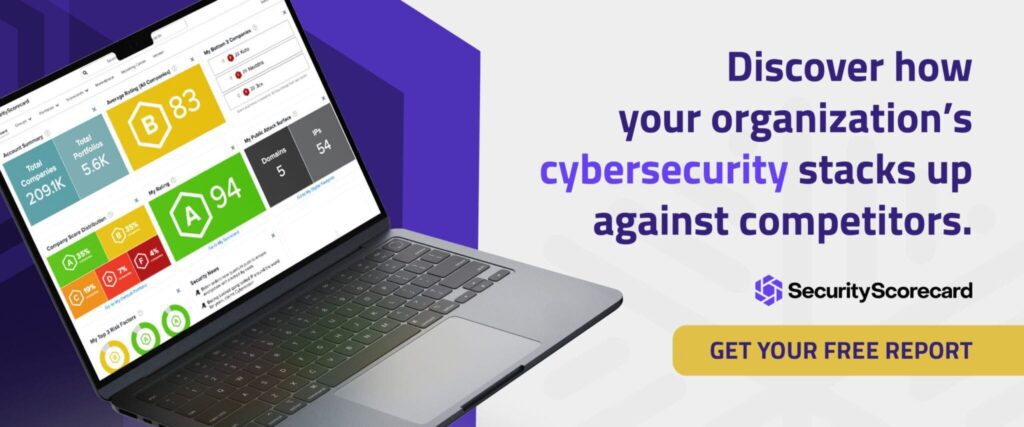How to Identify and Prepare for Network Security Threats and Vulnerabilities
We often measure the effectiveness of cybersecurity by the attacks we don’t experience, which can leave a nagging worry in the backs of our minds: is there a network security threat we’re missing? And is there a way to mitigate network security threats before they surface?
It’s a valid concern. Two-thirds of people on the internet — including people who work for your companies or partners — have been compromised in some way by cybercriminals, according to The Center for Strategic and International Studies (CSIS). In fact, almost $600 billion — nearly 1% of global GDP — is lost to cybercrime each year, and that number is projected to reach $10.5 trillion USD annually by 2025.
So how can you get a better handle on your network threats and vulnerabilities? This article will explain what network security threats are, some common threats, and how to identify them.
What is a network security threat?
A network security threat is exactly that: a threat to your network and data systems. Any attempt to breach your network and obtain access to your data is a network threat.
There are different kinds of network threats, and each has different goals. Some, like distributed denial-of-service (DDoS) attacks, seek to shut down your network or servers by overwhelming it with requests. Other threats, like malware or credential theft, are aimed at stealing your data. Still others, like spyware, will insert themselves into your organization’s network, where they’ll lie in wait, collecting information about your organization.
What are the main categories of network security threats?
While there are many kinds of network security threats, there are 4 main categories they fall into:
1. External threats
External threats are threats made to your business by outside organizations, individuals, or even natural disasters that could negatively disrupt your network. This is done by exploiting a weakness, vulnerability, or causing a loss of data that significantly affects business operations and the cyber security of your network.
2. Internal threats
These are threats from malicious insiders, such as disgruntled or improperly vetted employees who are working for someone else. Unfortunately, internal threats are common in many businesses. A 2022 report from Cybersecurity Insiders found that 57% of organizations feel insider incidents have become more frequent over the past 12 months.
3. Structured threats
Structured threats are organized attacks by cybercriminals who know what they’re doing and have a clear aim or goal in mind. State-sponsored attacks, for example, fall into this category.
4. Unstructured attacks
Unstructured attacks are disorganized attacks, often by amateurs with no concrete goal in mind.
What is the difference between a threat and a vulnerability?
If threats are attackers throwing rocks at a wall, a vulnerability is a weak spot in the wall — a place where attackers can break a window or pull out a loose rock and let themselves in.
Put simply, vulnerabilities are flaws in your systems that can be exploited by attackers. These are often not malicious errors, but simply mistakes or things that have been overlooked. An Amazon Web Services (AWS) bucket might be inadvertently left open to the public Internet, or perhaps a password wasn’t changed or a patch wasn’t installed on time.
Such mistakes are on the rise, according to Accurics, which finds that misconfigured cloud storage services are commonplace in 93% of cloud deployments. It’s not just cloud storage and software, however – vulnerabilities can be people as well. If you haven’t trained your employees about avoiding clicking on suspicious links, for example, they can be vulnerable to phishing.
What are common network threats?
Network threats come in a variety of forms and are constantly evolving and changing. The most common threats are likely familiar to you already.
1. Phishing attacks
Phishing attacks are attempts to trick people into opening suspicious links or downloading malicious programs. They range from the easily-spotted to sophisticated cons targeting a specific individual. Phishing campaigns are currently one of the most popular methods of attack, according to Microsoft.
2. Ransomware attacks
Often delivered via successful phishing campaigns, ransomware enters your systems, encrypts your data, and holds it hostage until you pay the attackers’ ransom. Once the ransom is paid, the attackers will allegedly give you control of your data, but criminals don’t always keep their word.
3. Malware
Any malicious program that enters your system, malware can be ransomware, a virus, or a worm that infects first a device, then the whole network.
4. DDoS attacks
DDoS attacks overwhelm your servers with requests for information, forcing sites, servers, and applications to shut down.
5. Advanced Persistent Threats (APTs)
During an APT attack, an unauthorized attacker codes into a system network, stays there quietly, and collects information.
6. SQL Injection
SQL injection attacks inject malicious code into a site or application using SQL queries in order to exploit security vulnerabilities and obtain or destroy private data.
How can you identify threats and vulnerabilities?
When you have an idea of which cybersecurity threats exist, it becomes easier to identify them and take steps to protect your organization.
1. Watch your own network
The most important way to identify threats and vulnerabilities is to make sure you can see them. You want to be able to look at your defenses the way an attacker would, understanding the weaknesses in your network and the threats most likely to affect your organization.
2. Use threat intelligence
What sort of attacks are being launched, and which threats might your organization attract? By understanding the threat landscape, you can protect your organization against threats before they happen.
3. Penetration testing
Where do your defenses buckle under pressure? Which employee is likely to click a bad link in a suspicious email? You can’t know until you test your defenses, and penetration testing is the best way to do that.
4. Manage permissions
By segmenting your network and managing permissions so that not every employee can access every part of your network, you can control who sees what — and also protect your network against data breaches and malicious insiders.
5. Use a firewall
There’s no reason not to use firewalls, internally and externally. Firewalls keep unauthorized users from getting access to your network. They also keep tabs on the traffic throughout your network.
6. Continuously monitor your network
Security needs to be constantly monitored to be effective. Once you’ve set your controls, make sure they’re checked regularly and updated often so that they can catch any new vulnerabilities or threats that may target your network.
How can you prepare for network security threats?
To best mitigate network security threats, you must first know how to prepare for them. Here are a few tips to help secure your network.
1. Segregate Your Network
Segmentation involves splitting a network into various zones. This limits the potential impact of an attack to one zone, and it requires extra work on behalf of the attackers to gain access to other network zones. Within this time, a threat can be mitigated before it affects the larger network.
2. Use a Proxy Server
A proxy server is an intermediary server that separates end users from the websites they browse. Utilizing a proxy server gives you greater control and monitoring over user behavior and which sites they can access. In addition, it can make sure that outbound connections are actually performed by a human and not a botnet.
3. Use Network Address Translation
Network Address Translation (NAT) is when one or more local IP addresses are translated into one or more Global IP addresses and vice versa. NAT can essentially hide the internal network from the outside world. This can help avert attacks that target specific IP addresses or prevent devices on the internal network from being accessed directly from the internet. Network Address Translation can also help prevent users from accessing malicious or unwanted websites.
How SecurityScorecard can help identify threats
The threat landscape is always shifting, as attackers try new ways to enter your network. To help monitor your systems, consider a solution that monitors your networks continuously, giving you an outside-in view of your company’s security.
Our easy-to-read security ratings, based on an A-F scale, enable you to provide your leadership with the necessary documentation to prove governance over your vendor risk management program.







